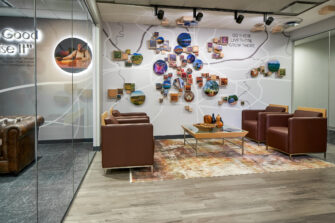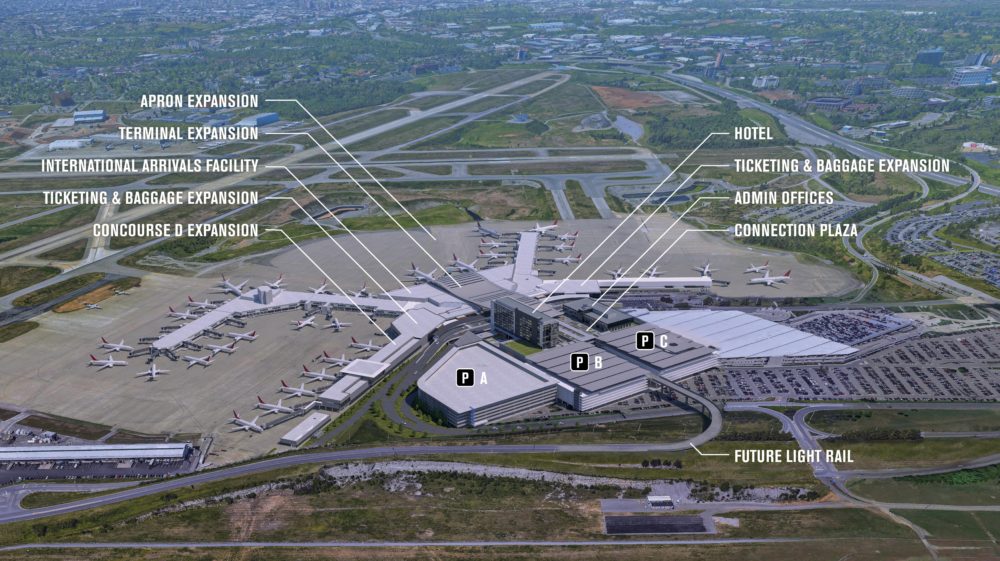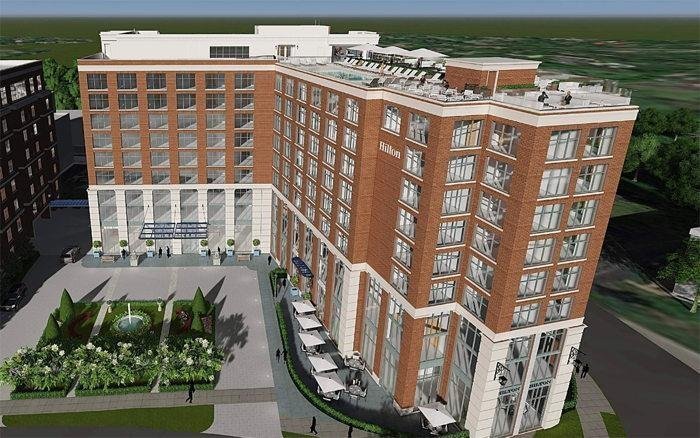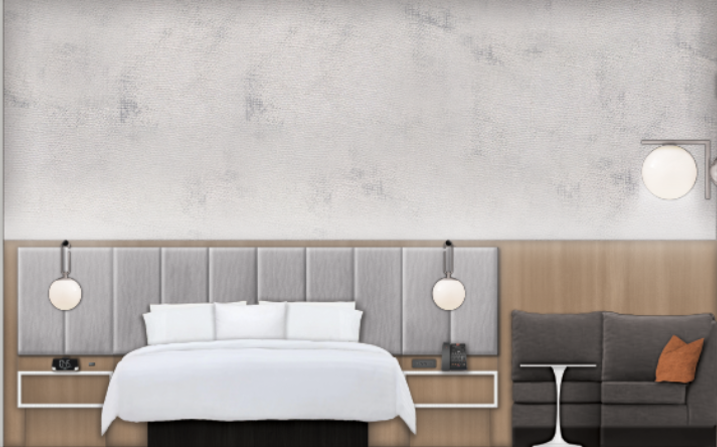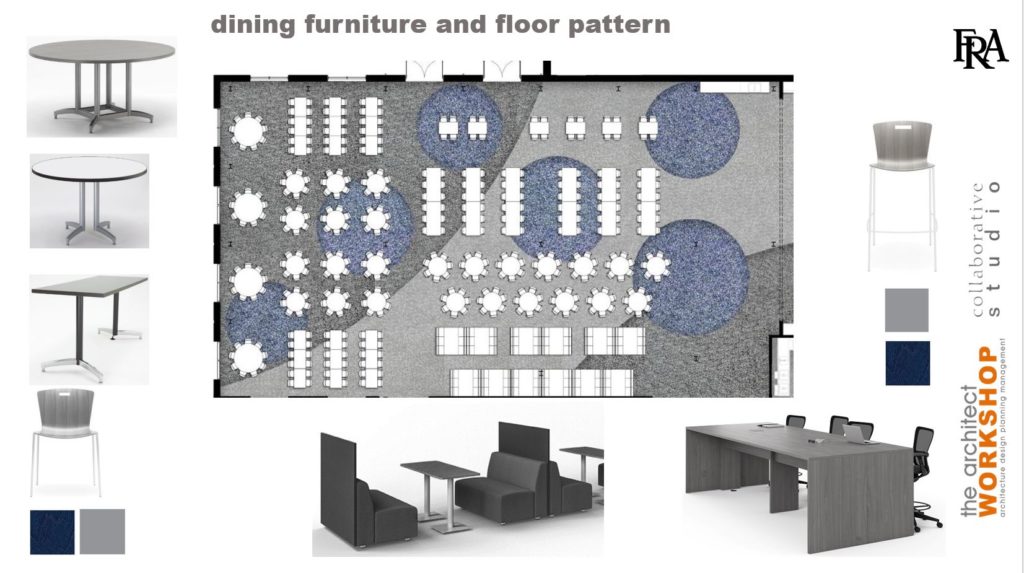Part III: Incorporating the History
We saw in Parts I and II how Collaborative Studio helped United Methodist Publishing House find and repurpose a new home that would better fit the company’s new culture in a world going paperless in a hurry.
The United Methodist Publishing House’s history goes all the way back to 1789 in Philadelphia when it was established as the Methodist Book Concern. The Nashville operation began in 1854 as the publishing house for the Methodist Episcopal Church South. In 1939, the three branches of Methodists in the U.S. at the time—the Methodist Episcopal Church, the Methodist Protestant Church, and the Methodist Episcopal Church South—merged, and Nashville was chosen as the headquarters for the united church. In 1957, it built a multi-story building at Demonbreun and 8th in downtown Nashville to house four large printing presses, a huge prepress department, and writers, graphic designers, and administrators.
The press in its heyday printed not only in-house publications but also was hired to print books and magazines for the Baptist Sunday School Board.
By the 1980s, it began to become clear that it no longer made sense to own its own printing presses.
As described by UMPH CEO Neil Alexander, “The very assumption that it made sense for a publisher to also be a printer went from ‘of course’ to absurd. That’s the two ends of the continuum.”
In 1989, UMPH sold off its presses and large parts of the building became vacant space. For the next two decades, the publishing industry continued to experience upheavals as more and more content became available online and new ideas such as print-on-demand and the paperless office took hold.
As new technologies came on board, the building accumulated past technologies such as hand presses and publishing equipment. It also housed an extensive library of historic books.
Fast forward to 2015, and now the headquarters has relocated to a contemporary space on a lakefront campus in MetroCenter. While the publisher was eager to embrace the efficiency and energy of its new home, it made it known to architect Jenny Campbell of Collaborative Studio, who designed the new space, that the best parts of the history would in some form move with the staff. Campbell was tasked with incorporating centuries of religious publishing history into the new environment.

Says Alexander, “Our aspiration was that the new building project a strong sense of a contemporary, forward-looking organization eager to embrace the tools of the digital age, but well-rooted and affirming the past technologies and efforts that built the foundation that made it possible for us to have this work to do.”
Campbell’s solution was a combination of placing interesting artifacts like the hand-cranked printing presses in nooks as fine sculpture, hanging black-and-white photographs of downtown Nashville, and coming up with inventive ways to celebrate the past.
Read more…
